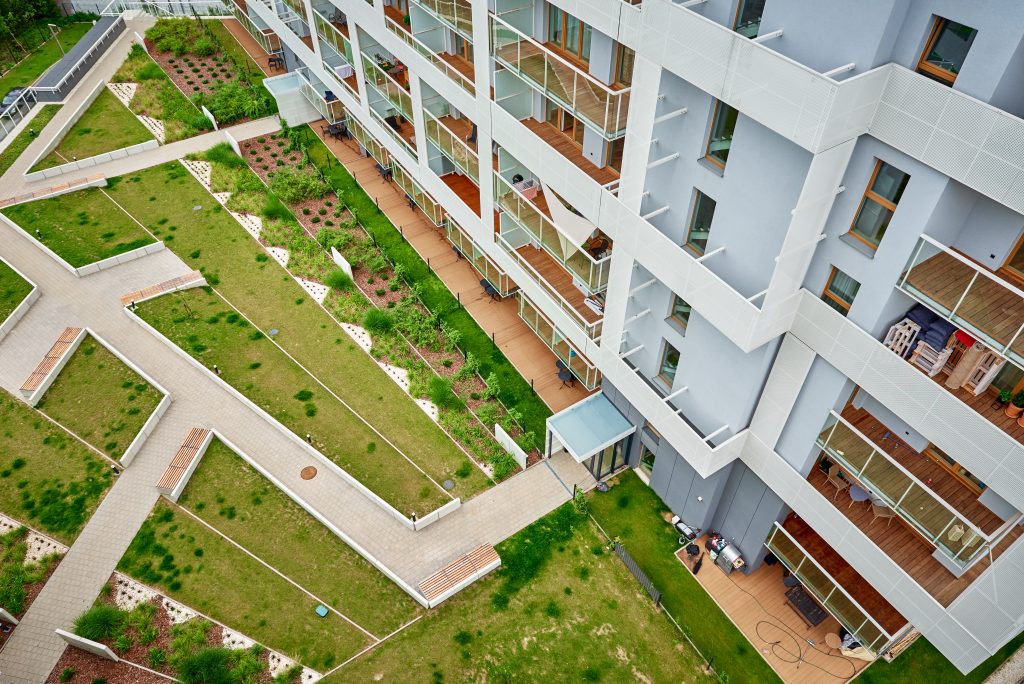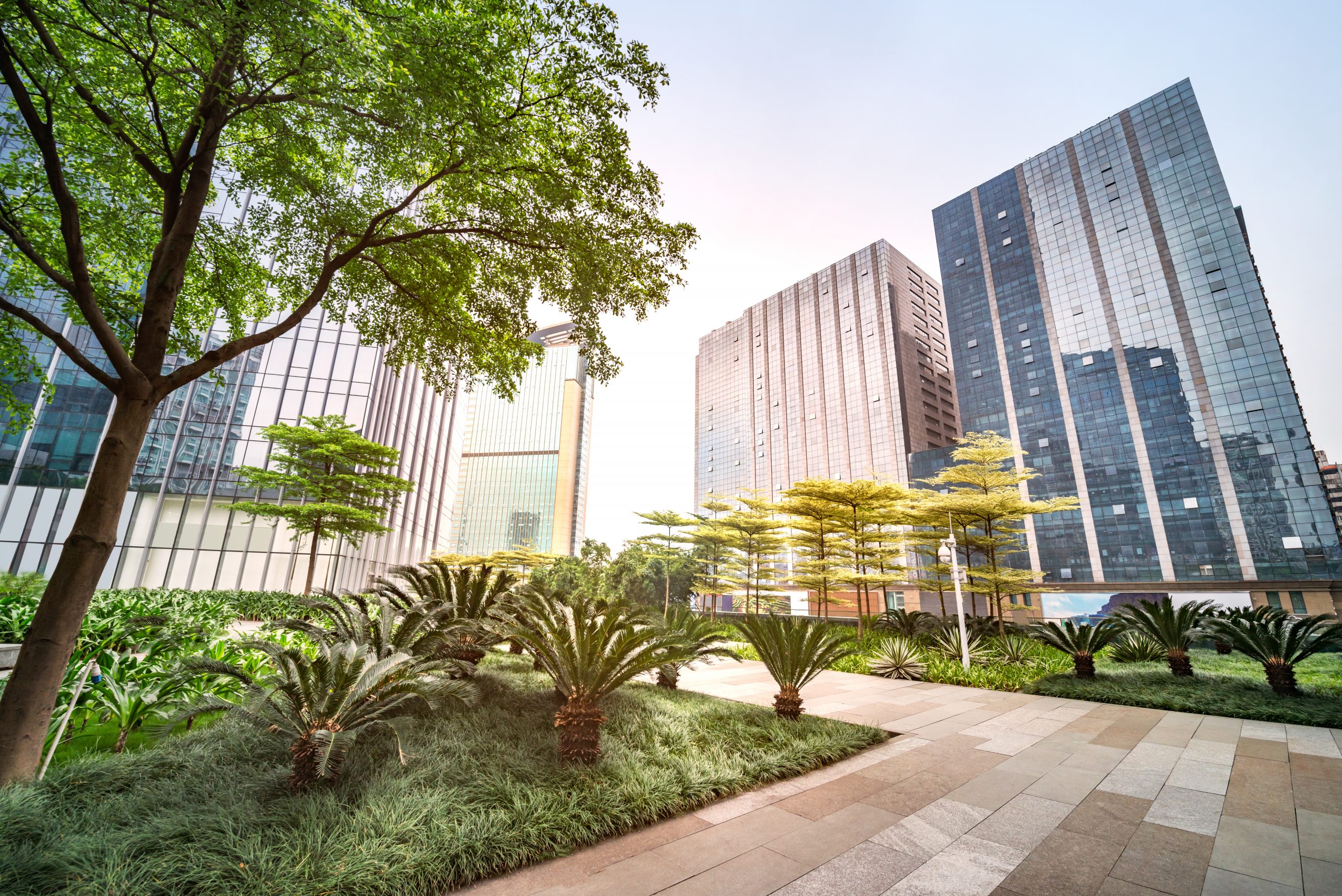Green buildings are driving innovation and change in modern construction design due to the industry’s current and historical environmental impact. Roughly 40% of the UK’s carbon emissions come from the construction, operation or maintenance of buildings (Chartered Institute of Building).

What are green buildings?
Through new technologies and eco-friendly processes, green buildings minimise the consumption of water and energy, use sustainable materials, provide comfortable indoor air quality, and are built with a whole life mandate to combat climate change.
Through holistic, sustainable practices and technologies, green building design significantly reduces a building’s impact on the environment and improves the wellbeing of users and local communities.
Sustainable and recyclable materials
Using environmentally friendly and locally sourced materials on green buildings avoids the production of carbon emissions associated with the manufacture and transport of new, non-sustainable products.
Typical sustainable materials include rapidly renewable plant products such as bamboo and straw, along with hempcrete (hemp, lime and water), recycled steel, plastic and glass, reclaimed wood and cork.
Renewable energy integration
Using natural resources, renewable energy integration reduces greenhouse gas emissions, minimises carbon footprint and establishes a more sustainable future for buildings and communities.
Through detailed planning and design, renewable technologies such as solar panels, wind turbines and heat pumps can be integrated into new and existing green buildings to generate clean energy on site.
Water management
Water conservation is a key objective of green building design. Green buildings use water that is collected, used, purified and reused on site. Rainwater harvesting and low-flow water fixtures are typical techniques used to conserve water and reduce waste in green buildings.
Mitigating water pollution is also a key factor. Green building technologies such as green roofs and vertical gardens absorb rainfall to reduce runoff which minimises the volume of pollution that enters the water systems.
UK standards for green buildings
Green building practices are validated through various UK certification schemes.
BREEAM (Building Research Establishment Environmental Assessment Method) certification assesses and scores various construction and operation processes to establish if a building is green. These include energy use and efficiency, water use and management, materials, waste management, pollution, health and wellbeing, quality control, transport, land use and ecology.
LEED (Leadership in Energy and Environmental Design) is a global, holistic green building certification that addresses a building’s adherence to protecting the environment, wellbeing, water conservation, biodiversity, the green economy, community and natural resources.
Environmental benefits
The renewable technologies, waste reduction, water management and reduced carbon emissions of green buildings diminish climate change and preserve natural resources. Generating improved air quality and creating healthier communities are other key environmental benefits.
Lower operating costs
The whole life financial benefits of green buildings outweigh concerns around the upfront costs. Lower utility bills and maintenance costs make green buildings attractive to buyers and tenants. According to the US Green Building Council, green buildings have almost 20% lower maintenance costs, while green retrofit buildings typically yield a 10% reduction in operating costs.
Improved health and productivity
Green buildings have better indoor air quality through increased natural ventilation and they are designed to maximise the infiltration of natural light. Both of these elements are known to improve wellbeing and productivity, as confirmed in a research study that found some green buildings provide the same wellbeing benefits as spending time outdoors, around nature.
Enhanced property value
Primarily due to energy efficiencies, long term financial benefits and global concern around climate change, green buildings achieve an average capital value premium of more than 20%.
Centre for Construction Best Practice (CCBP) Membership
The CCBP is a dedicated advocate of green buildings across the UK’s built environment. Our members share research and evidence-based reports around this and other topics that impact the sector and wider communities.
Find out more about our events and research, and the benefits of becoming a member.
References
- Chartered Institute of Building – Climate Change and Sustainability
- BREEAM – Industry accreditation
- LEED – Industry accreditation
- US Green Building Council – Benefits of green building
- Sage Journals – A review of green systems within the indoor environment
- JLL – News release: Environmentally sustainable real estate attracts higher prices
